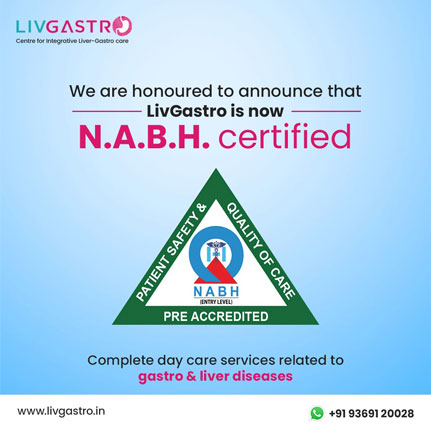
Team LivGastro provides utility based model of care that integrates specialists, primary care , laboratory, imaging and other health services to give patients a convenient and superior outcome along with a pleasant experience. Since we primarily focus on outdoor-patient care, on the site instant testing along with detailed and accurate results, we enable our patients and their families save
a lot of effort, time and money.
A fissure, or rather an anal fissure is a painful ulcer occurring in the posterior midline of the skin before its entry to the rectum. It may also be described as a cut or tear in the anus that extends to the anal canal. Fissures are not uncommon in both sexes, the common factor being bleeding and pain or spasm.
The customary symptoms of an anal fissure are pain, accompanied by bleeding during and after bowel movement. In many cases, people fear to visit the toilet, trying to avoid defecation.
Many things can cause anal fissure. As a matter of fact, anything that irritates the inner lining of the anus can give rise to a fissure. However, in most cases, passing very hard stool is considered to be the raison d’ être behind formation of a fissure. Recurring diarrhea (Chronic type) can also cause fissure
Treatment of fissure with infrared laser (Electrocautery) is considered as one of the few non-invasive line of treatment. In fact, the radiowave excision and treatment of chronic anal fissure is a potential painless alternative to classical surgery.
Elimination of the anal fissure with the help of radio wave machine ‘Surgitron’ can be accomplished sans in cutting operation, while contactless radio frequency method takes care of evaporation of scar formation in a matter of few minutes.
Radio surgery can just be termed as an electro surgery at radiofrequency. The term ‘radio’ is used because the frequency of the device creating these waves is analogous to radiowave frequency used for broadcasting. However, it is necessary here to rule out misconception about radio surgery by discussing two other, older modalities such as, ‘electrocautery’ and ‘hyfrecation’ that are quite different from radio surgery.
Electrocautery entails the passing of low frequency, low voltage, and low wattage alternating current (0.5 – 1.5 MHz) through the electrode, which resists the flow of current and so turns hot. In electrocautery, the heat [rather than the radio wave] is transferred to the soft tissue by convection. Massive cell destruction results from the application of cautery and the destruction caused by this cauterization are equivalent to that of a third degree burn.
While in hyfrecation, a highly modulated high frequency current of low wattage and high voltage is supplied to the electrode, and the surface of the tissue is burnt by a spark, which is produced between the tip of the electrode and the tissue. Its effect is mainly superficial and it cannot be used to incise the tissue.
Radiofrequency energy , on the other hand, is now being extensively used in many different medical applications that include treatment of anal fissure for its ability to achieve a precise and controlled thermal ablation of soft tissue. The heat for this ablation is generated by a natural resistance of the tissue, which comes in the path of the waves released through the electrode tip of the device. The cellular water in the soft tissues gets heated and when the temperature reaches 1000C, it starts boiling and produces steam, which results in cellular molecular dissolution of individual tissue cells. The cells exposed to these waves are destroyed while the surrounding tissues remain unaffected. This property of radiofrequency eliminates the possibility of undue damage to the normal tissues surrounding the fissure, while improving the surgical precision.
Currently, radio surgery is considered the best non-invasive line of treatment for anal fissure as it does not create loss of blood, while chances of relapse is practically nil. Besides, there are no side effects and the patient can go home the next day.
